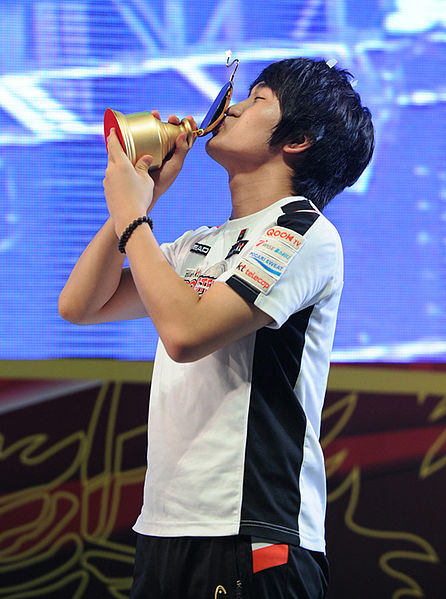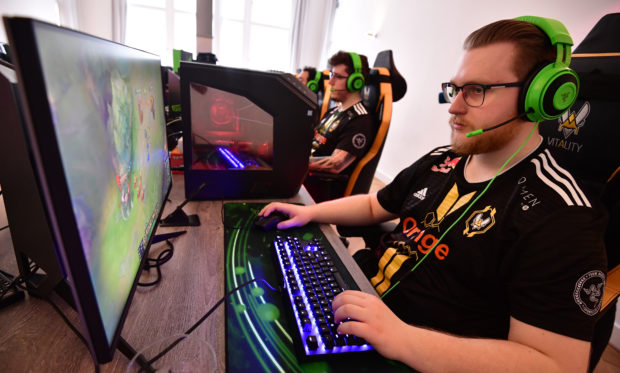It’s not every day that “kaka-computer” can become a cause for national celebration.
For the first time in history, gold medals will be contested in 6 esports medal events in the 2019 Southeast Asian Games, a competition sanctioned by the International Olympic Committee (IOC).
As the host country, the Philippines will be blazing the trail for future international sporting events that will include video games. However, it won’t just be the organizers who will be grappling with the newfound challenges of simultaneously hosting multiple esports tournaments. Older members of the audience (or the nontech-savvy) looking to support their respective national teams are in for a new spectating experience.
So what exactly should you be looking for to tell if your chosen team or player is comfortably ahead or reeling on the digital ropes? We at Inquirer Sports have come up with a handy guide for rooting for your country’s cyberathletes even if you can’t tell your health bars from your mana pools.
The coming SEA Games will feature two personal computer (PC) games, namely Dota 2 and StarCraft 2, two mobile games in Mobile Legends: Bang Bang and Arena of Valor, and Tekken 7 and a still-unannounced game as the last two games for console.
By far the easiest event to understand on this list for the average nongamer is Tekken 7, a fighting game published and developed by Japanese company Bandai Namco Entertainment.
In Tekken 7, two players choose a fighter from a roster of 48 characters, each with distinct fighting styles, and try to beat down their opponent’s health meter to zero to get the win.
Easy enough to grasp, but the unseen clash of wills between players at the top of their games is anything but. These players have familiarized themselves with the exact properties of their punches and kicks down to the exact millisecond.
“Though sitting in front of the computer may not seem like it, StarCraft 2 is also known for its punishing physical toll on players.”
Tekken 7’s photorealistic graphics, smooth animations and simple objectives ensure that even the most uninitiated of esports spectators will be able to follow the action. It goes without saying that a good time to cheer is when the player you’re rooting for is laying down a beatdown on his/her opponent.
A bit trickier than the straightforward brawling of Tekken 7 is the real-time strategy (RTS) game StarCraft 2.
The original StarCraft, which was released in 1998 by Blizzard Entertainment, laid down the groundwork for the modern competitive video gaming scene due to its fanatical following in South Korea and paved the way for esports’ eventual distinction as a future medal event in IOC-sanctioned tournaments.
In RTS games, players choose a faction, gather resources, and then build an army with the goal of destroying the opponent’s base.
Physical toll

Starcraft player Lee “Flash” Young Ho kisses a trophy at the 2010 Korean Air OnGameNet Starleague StarCraft competition in Shanghai, China. Flash initially retired at the age of 23 while his long-time rival, Lee Jae-dong, retired from professional gaming at the age of 26. Photo courtesy of ACROFAN
StarCraft 2 lets players choose between three races, each with their own unique strengths and weaknesses. Closest to home are the Terrans, humans featuring specialized troops and vehicles that, while albeit fragile, are capable of devastating firepower if played to their strengths. The enigmatic Protoss are the most technologically advanced of the three. Their warriors and vehicles are the most durable and powerful among the races, with the downside of being the most expensive. Lastly are the utterly alien Zerg that prefer swarming their enemies with superior numbers.
Matches of StarCraft 2 will appear to be a series of maneuvers of densely packed armies across a map before a decisive engagement. Like in Tekken, an invisible battle of wits will be raging between the two players as they take into account the matchup between their chosen races and best units to build to counter their foe.
Though sitting in front of the computer may not seem like it, StarCraft 2 is also known for its punishing physical toll on players.
Actions per minute (APM) is an infamous metric tied to the RTS genre. Much like batting averages or field goal percentages, APM determines how much a player uses their keyboard or mouse. In games where players must micromanage unit movement, resource collection, researching technology and ability usage, APM will determine if a player can do all these things effectively and quickly. A player with a higher APM—meaning, the more physically active player—will have an edge over his/her opponent as he/she will be able to gradually pull away in terms of units fielded and resources over time.
The importance of APM? Professional StarCraft players tend to retire before the age of 30 as their reflexes slow and their APMs drop.
Matches of StarCraft 2 are usually decided once a player’s army suffers irrecoverable losses. Once a player assesses that he/she can no longer rebuild and continue the fight, he/she will concede the match.
Moba
The last three announced games, Dota 2 on PC and mobile games Arena of Legends and Mobile Legends, all belong to the video game genre of multiplayer online battle arena (Moba). For esports newbies, these games will be the hardest to comprehend without commentators describing the action.
In Mobas, a team of players work together to take down enemy towers across three lanes to destroy a structure in the middle of the opposing team’s base, all while simultaneously defending their own towers and structures. Players pick characters from a vast roster with differing specialties such as attack, defense and support. Unlike the previous games mentioned, which are wholly 1-on-1 affairs, Mobas put a premium on teamwork and the squad that proves to be greater than the sum of its parts will triumph.

Members of the eSports outfit Team Vitality, play video games in the training room of a “Gaming House” to train for an upcoming tournament of the world’s most popular online video game “League of Legends”. The idea of a “Gaming House” allows team-mates to live and play together under one roof to improve team chemistry and performance. Tobias SCHWARZ / AFP
The events in Mobas, which draw the loudest cheers from crowds, mainly occur in engagements called ganks and clashes. Ganks are small skirmishes in which players try to kill enemies who are either poorly positioned or vulnerable to attack. The fluid nature of the action in Mobas means that if the defending team responds quickly enough, the gank becomes a full-on team fight called a clash.
A clash in any Moba is usually a visually cluttered experience, with multicolored spells and skills flying across the screen in every which way. To be able to decipher what’s going on in the chaos of a clash is unfortunately reserved for those familiar with the specific Moba.
Our advice for newbies watching Moba medal events? Just listen to the shoutcasters or commentators.